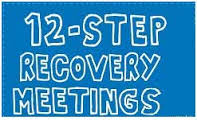In this blog post, we continue our series on the different levels of care for sex addiction. In Part 1, we discussed the highest level of care for sex addiction – Inpatient Rehabilitation. Next, we will discuss the level of care that is a step down from inpatient/residential, and is referred to as Intensive Outpatient (IOP) therapy.
Intensive Outpatient (IOP) therapy comes in a couple of different formats. Many inpatient treatment programs are familiar with formalized IOP programs, and may make a recommendation for an individual to transition into that level of care following the completion of inpatient treatment. A formal IOP program includes daily group therapy and weekly individual therapy. When individuals are not in therapy, they are often required to volunteer or work part time while rigorously attending 12 step meetings.  Additionally, they may be required to live in sober living housing affiliated with the IOP program. Sober living houses are places where everyone there is committed to working a recovery program, and they generally have guidelines for being able to reside in the house such as staying sober, attending 12 step meetings, and being in by a certain time in the evenings. Sober houses provide an opportunity for an individual to continue to be supported in their sobriety, but with less supervision than in an inpatient setting.
Additionally, they may be required to live in sober living housing affiliated with the IOP program. Sober living houses are places where everyone there is committed to working a recovery program, and they generally have guidelines for being able to reside in the house such as staying sober, attending 12 step meetings, and being in by a certain time in the evenings. Sober houses provide an opportunity for an individual to continue to be supported in their sobriety, but with less supervision than in an inpatient setting.
Options for formal IOP programs for sex addiction are limited, therefore, many outpatient treatment centers have developed a model that is a bit less formal, but still provides the level of support that an IOP program would. In this setting, a person might be involved in more than one individual therapy appointment per week, and multiple support groups (a combination of group therapy and 12 step). They may also be pursuing some sort of trauma therapy, such as EMDR, and have regular appointments with a psychiatrist to manage any medication regiment. In this case, rather than living in a sober living house, the individual may reside in their home local to the outpatient center.
The main difference between Intensive Outpatient (IOP) and Inpatient Rehabilitation is that the individuals do not reside at the treatment center, so they do not have 24-hour therapeutic and medical care. They typically reside in their own living space, and may even maintain part or full time employment. Because many recovering addicts struggle with transition, the IOP option can provide a nice transition for integrating recovery into daily living.
Appropriate candidates for IOP may include the following:
- Individuals who have completed inpatient treatment and need more time to transition back into their daily life.
- Individuals who are struggling to maintain sobriety in their outpatient level of care, and need some additional structure and support.
- Someone experiencing chronic relapse in their recovery.
The examples listed above are simply suggestions. It is always best to speak to your current provider, or schedule an assessment with a Certified Sex Addiction Therapist (CSAT) to determine what course is best for you.